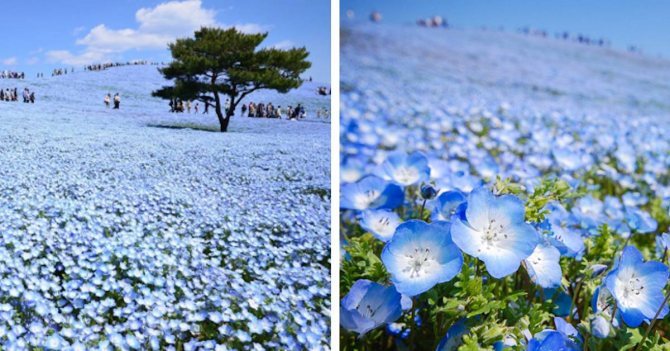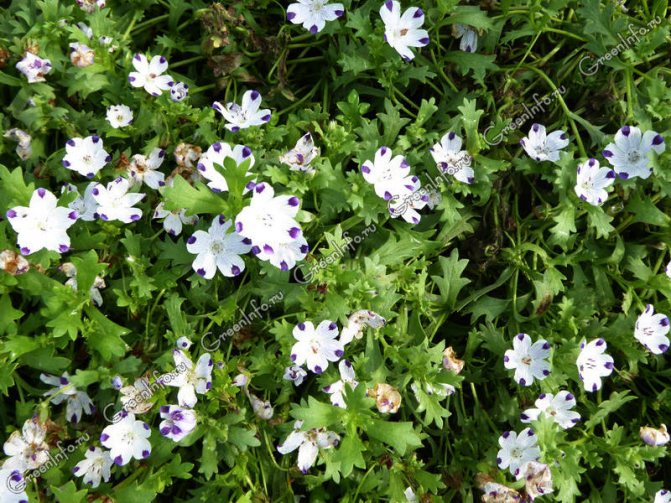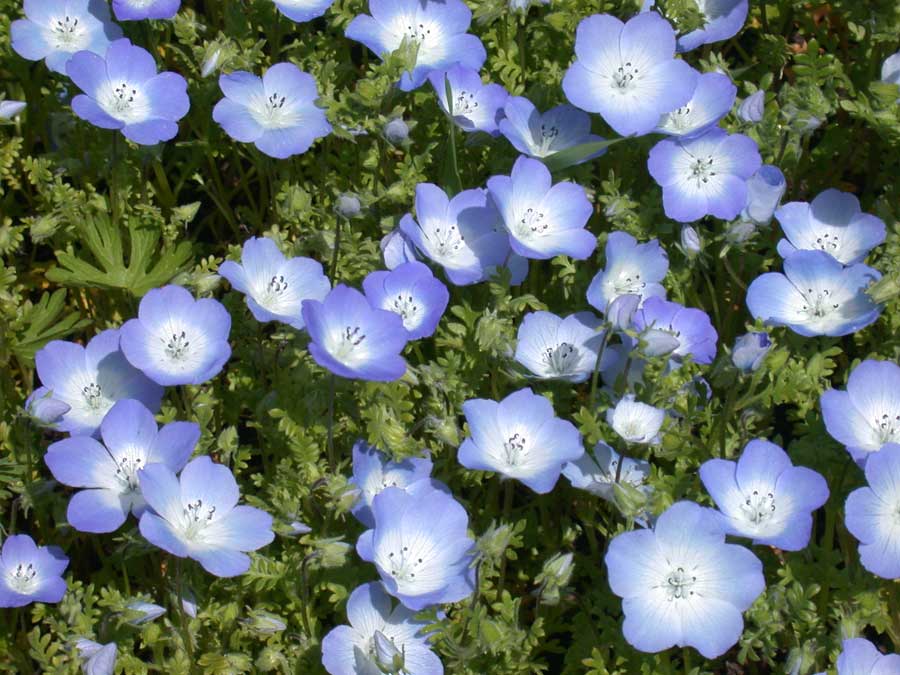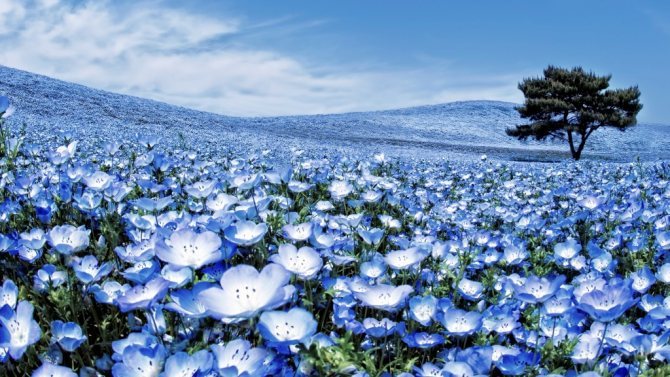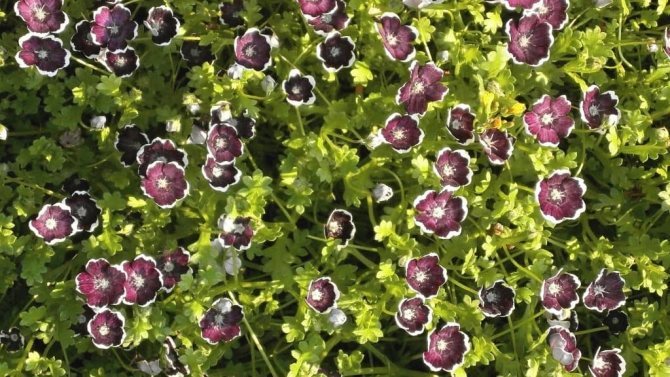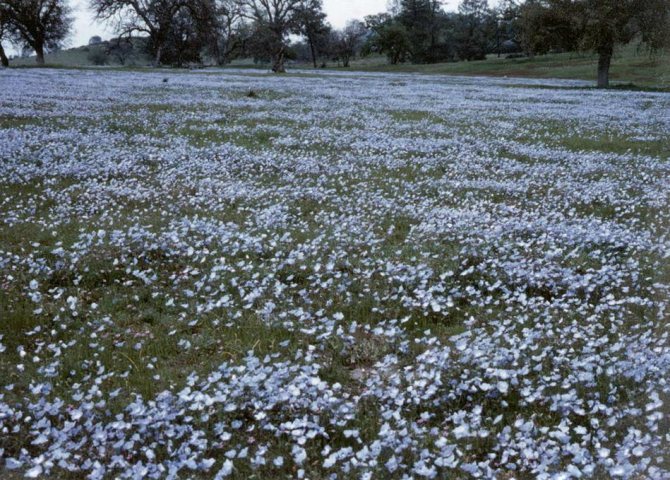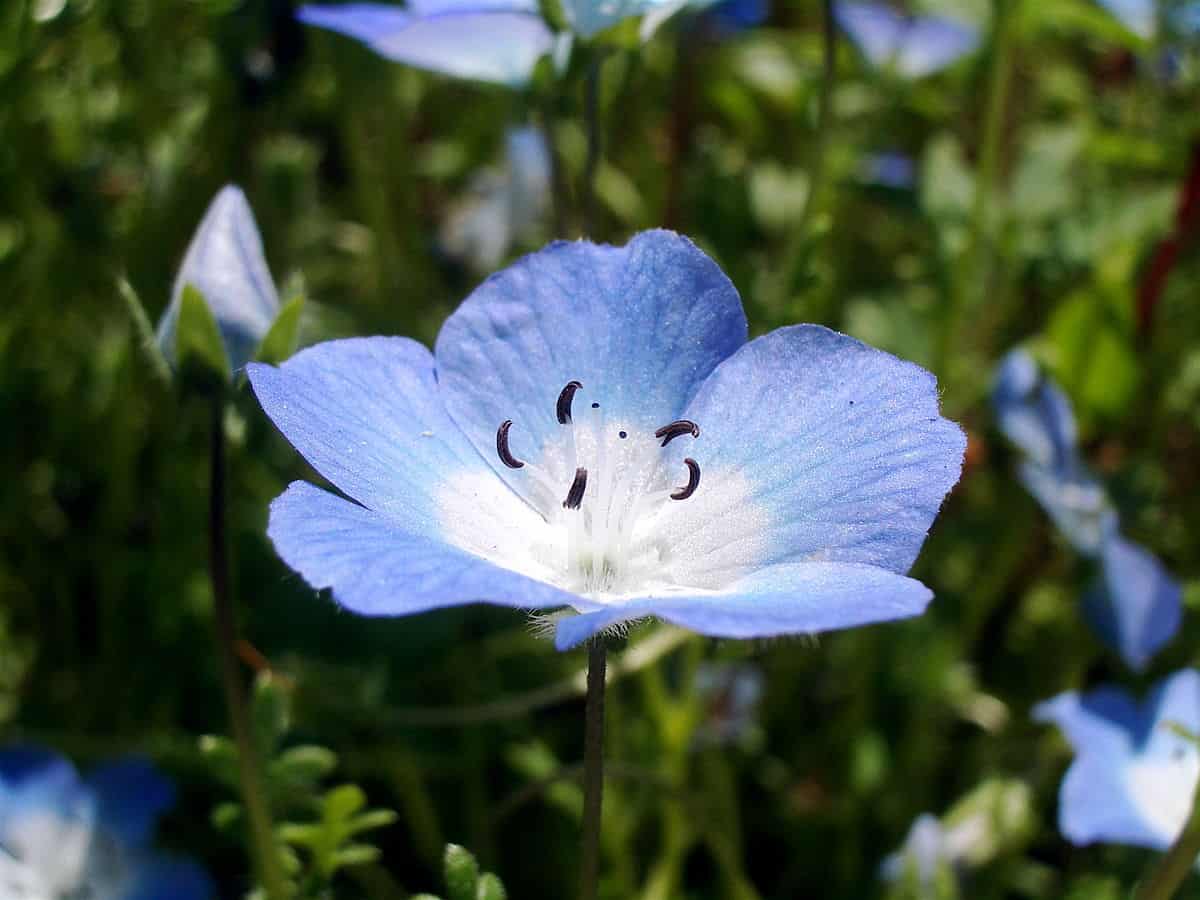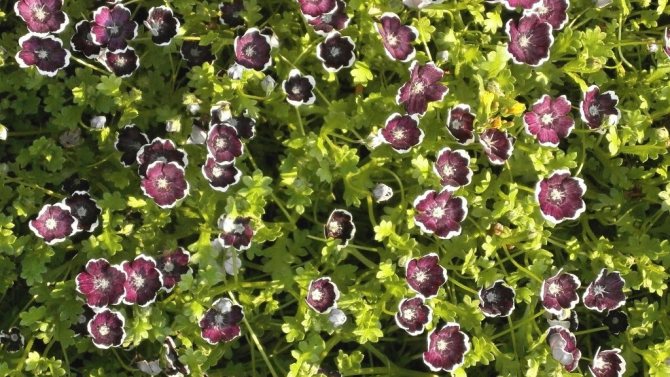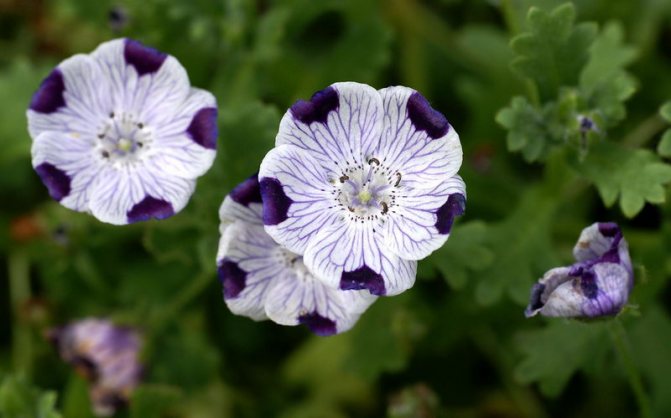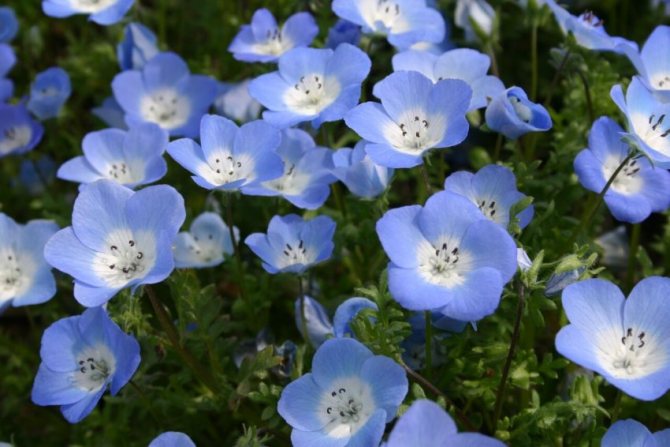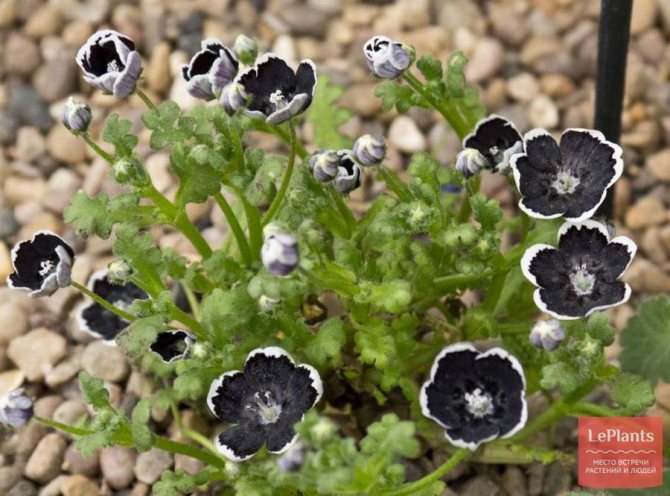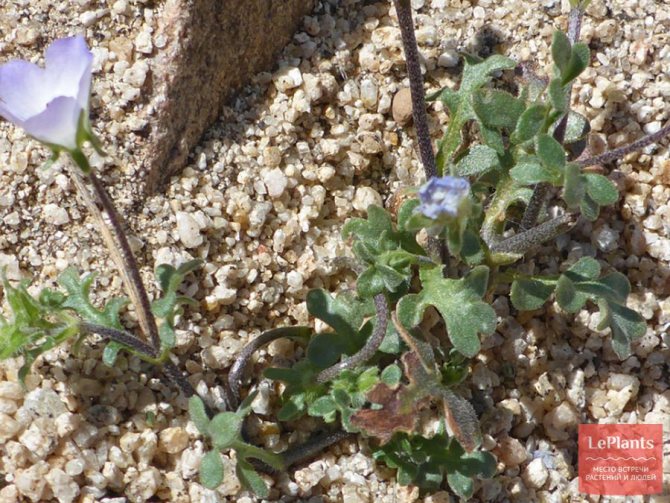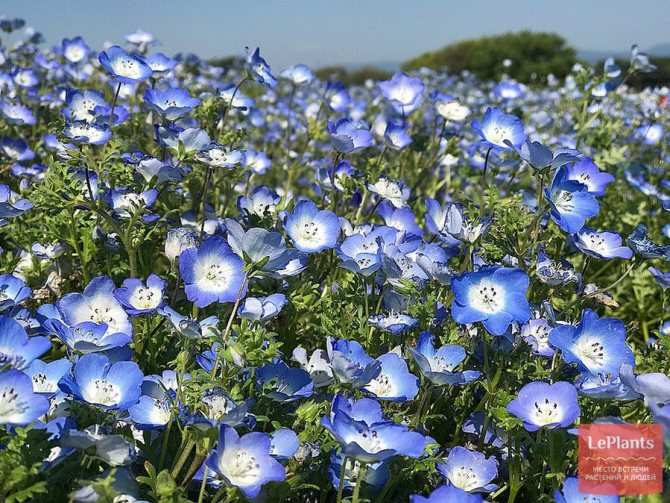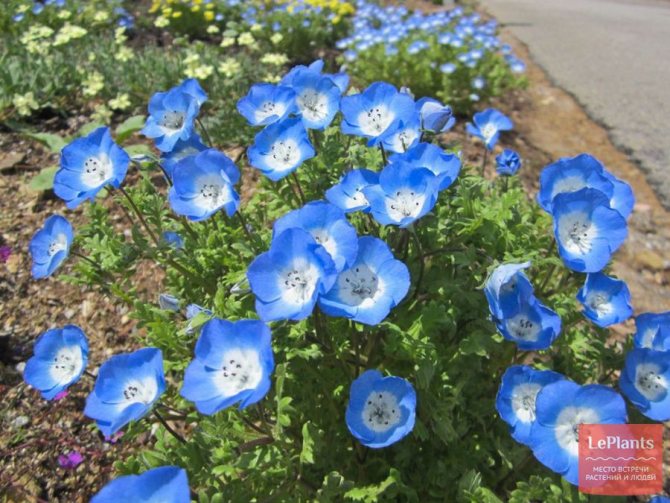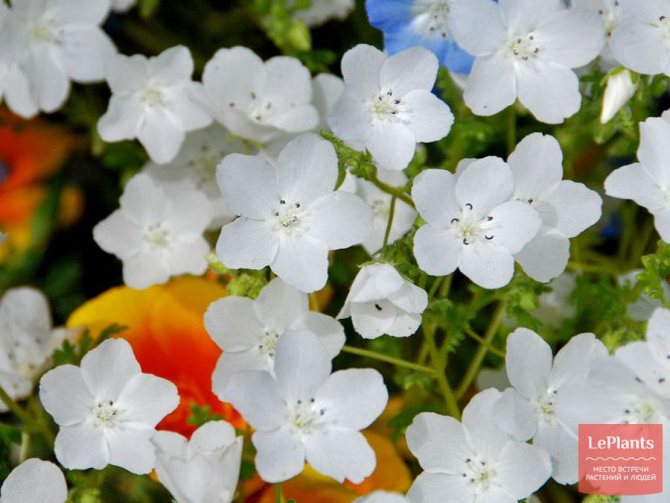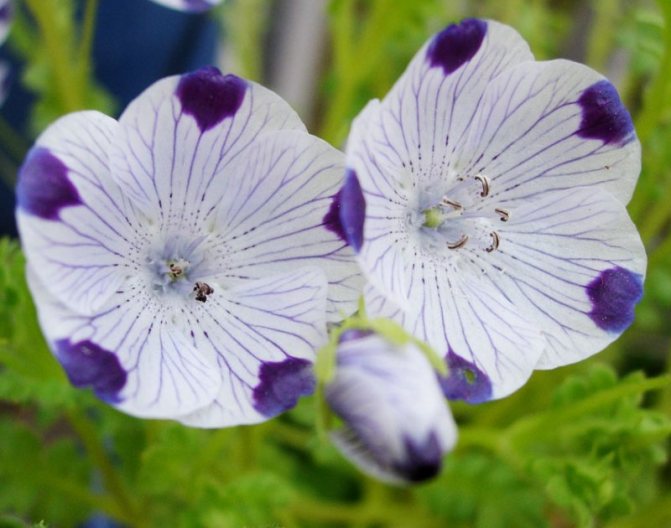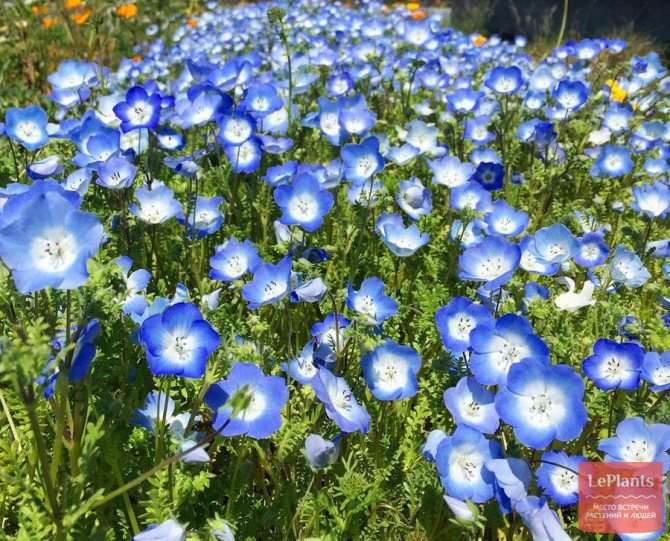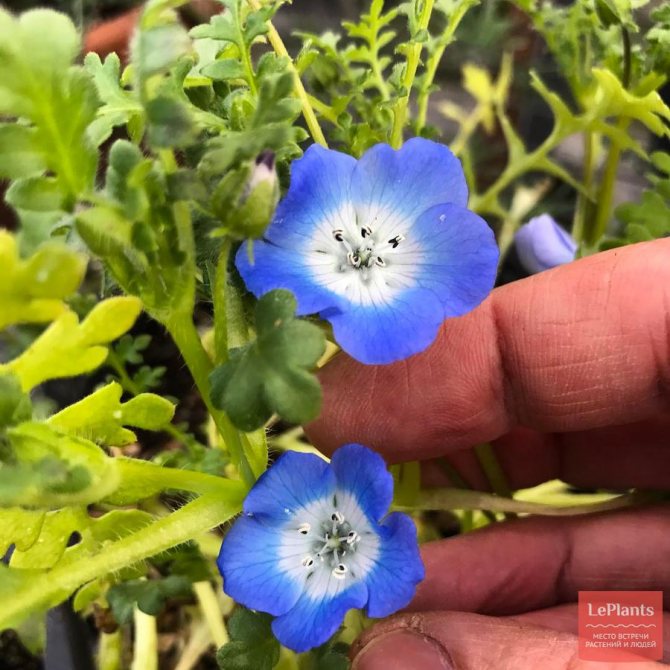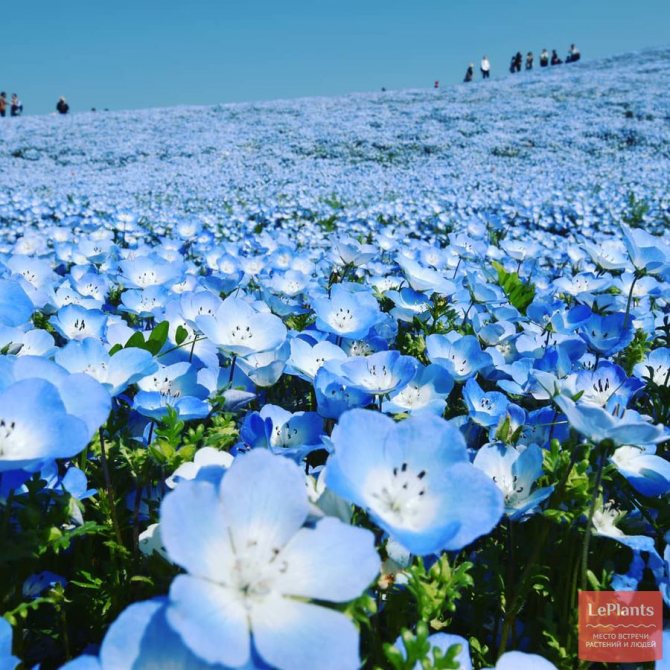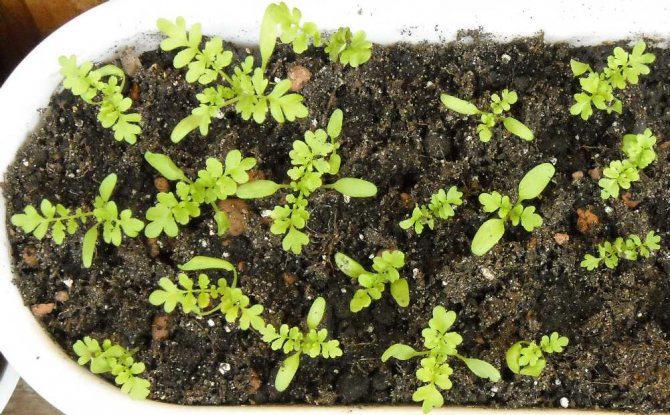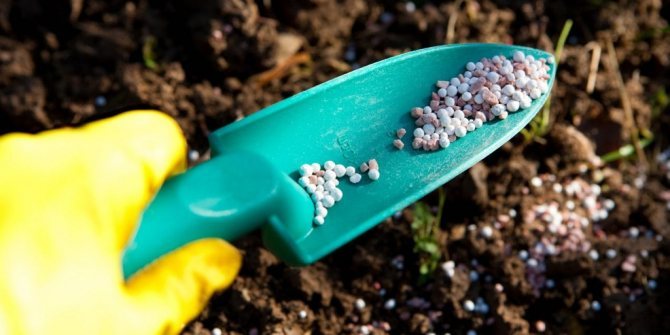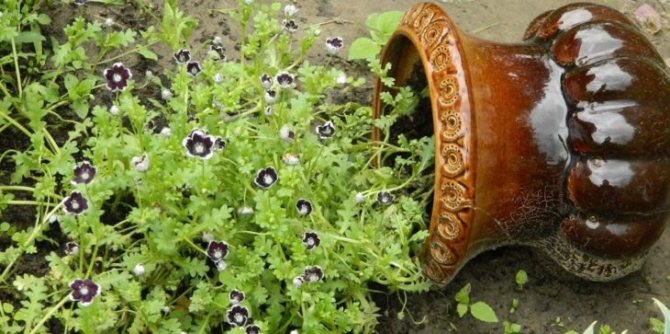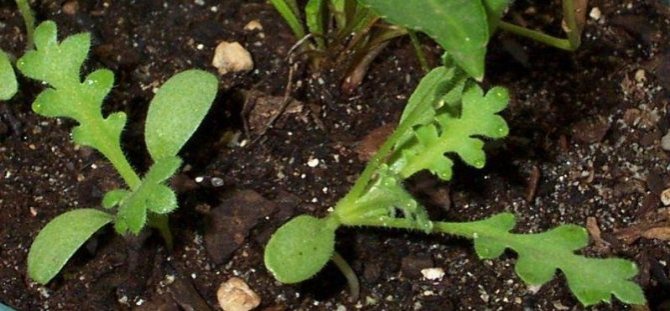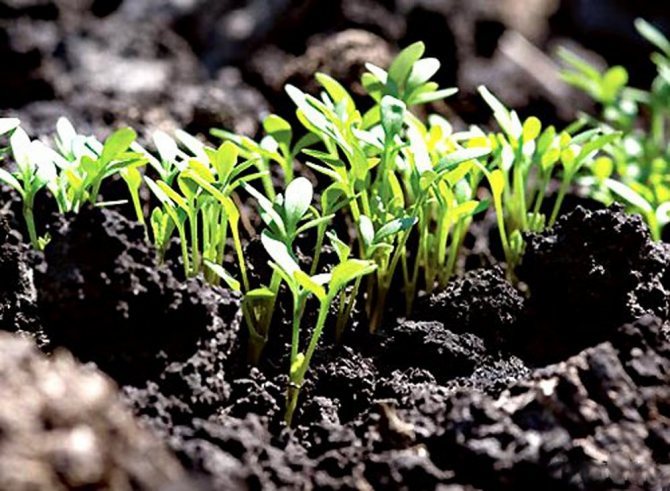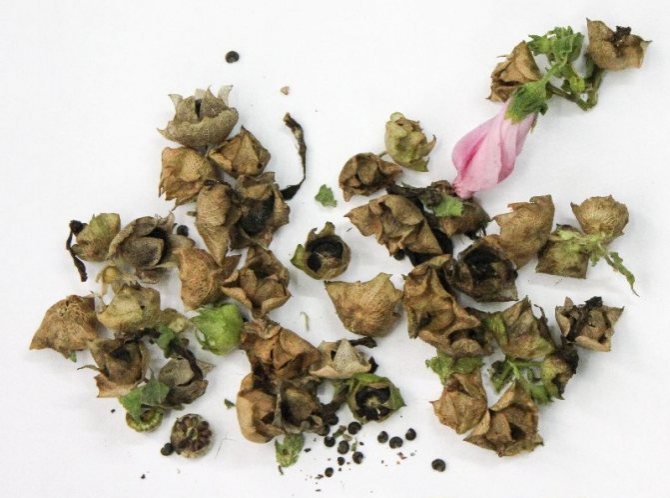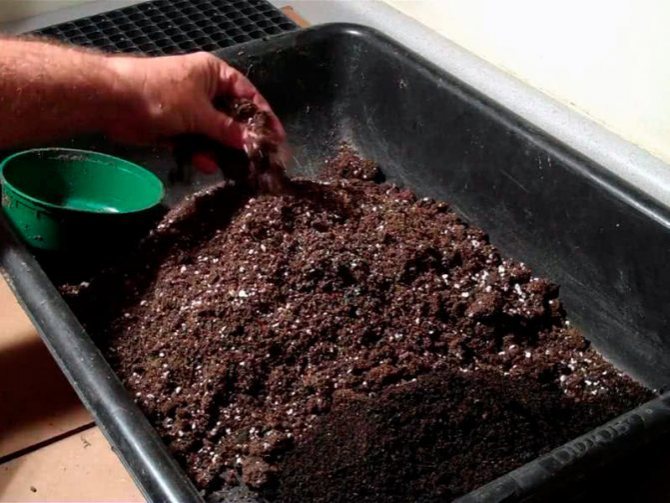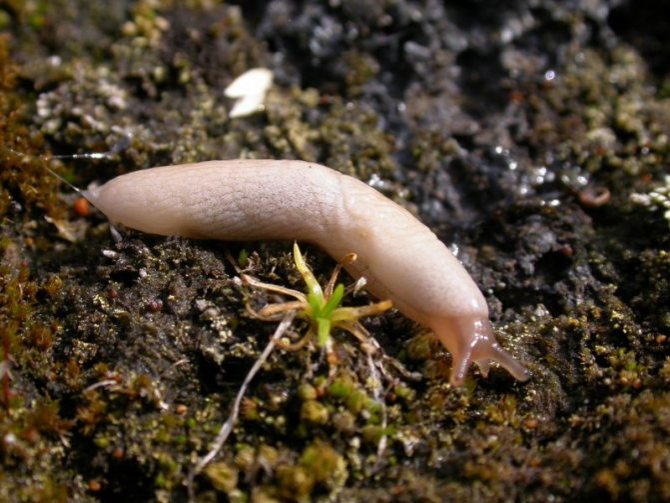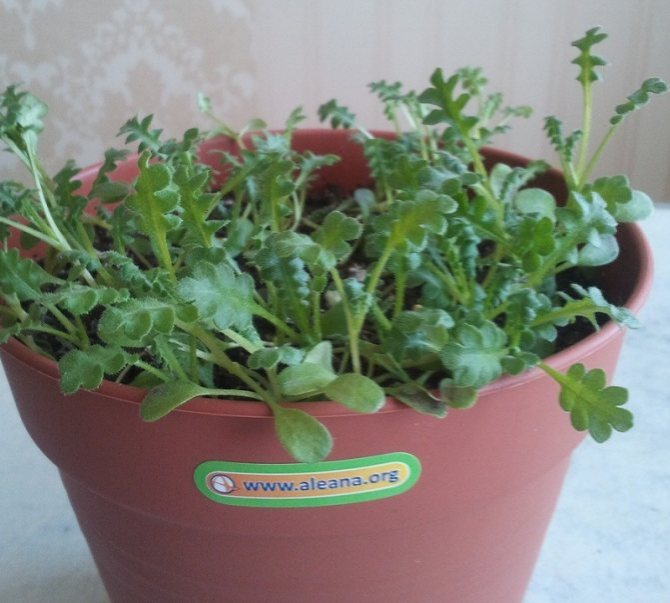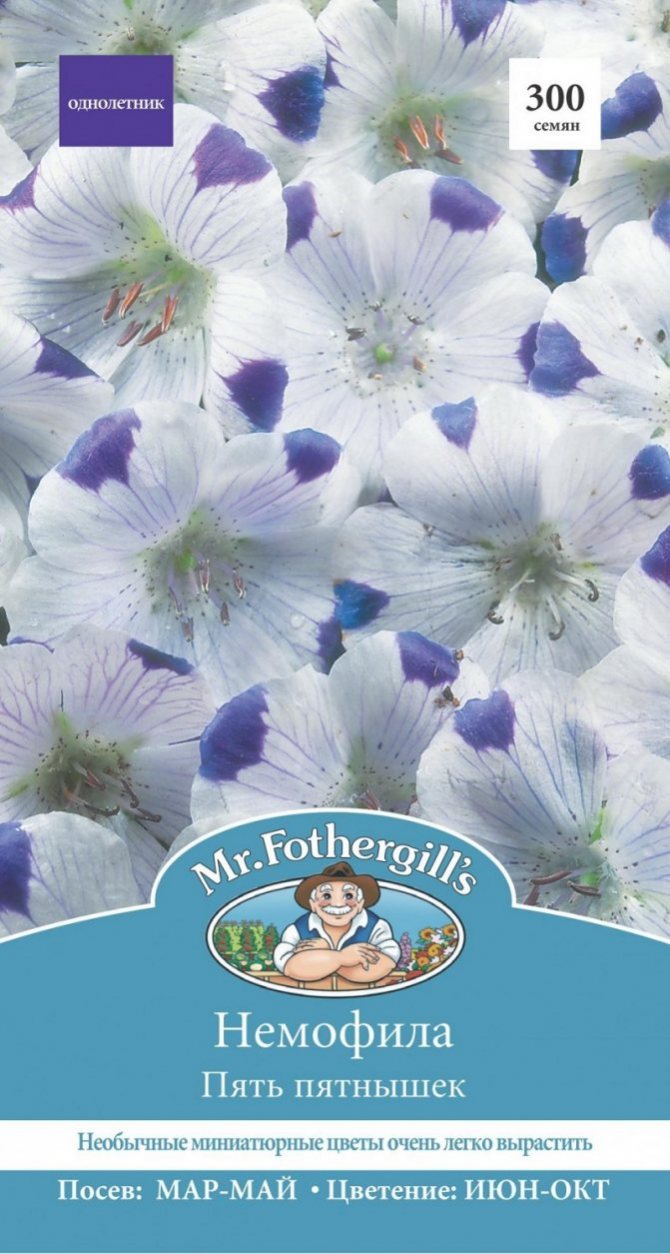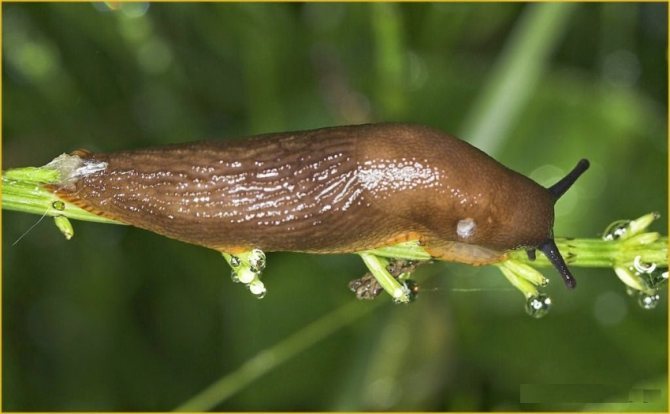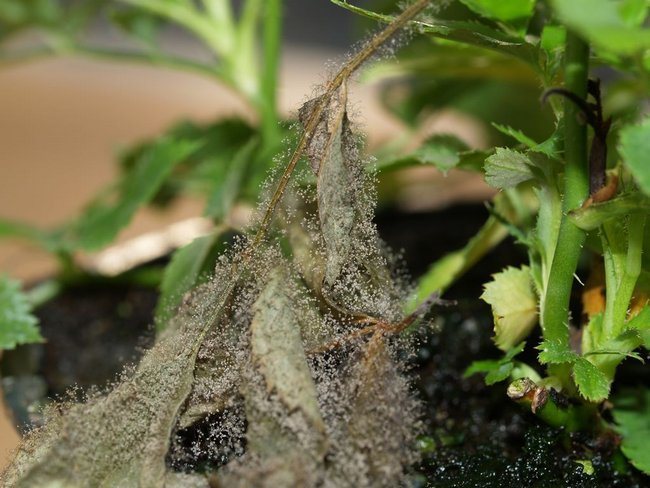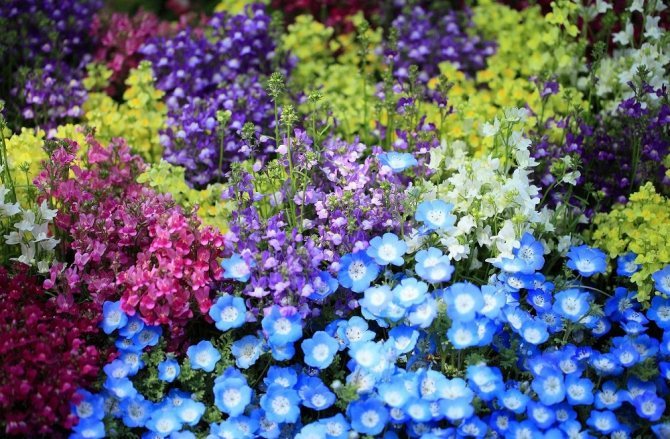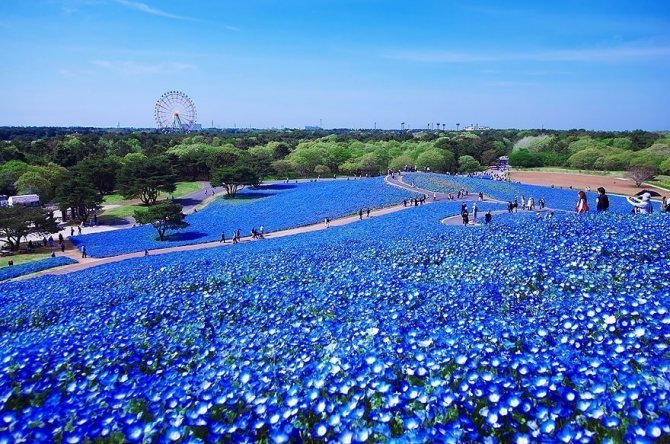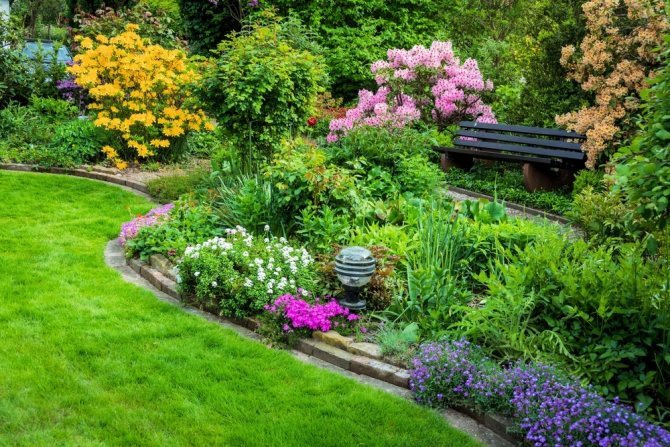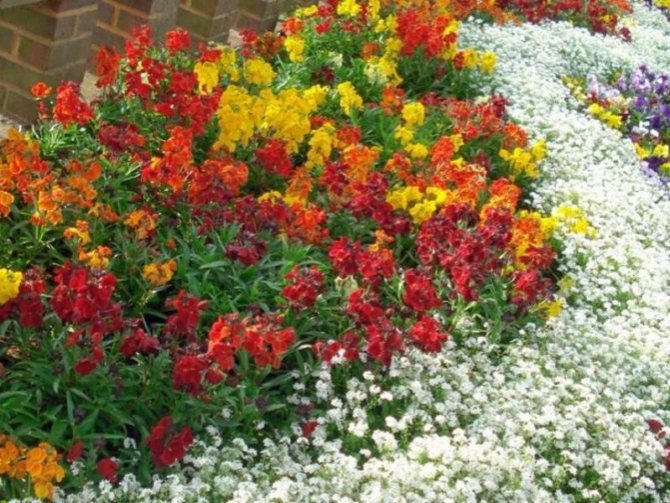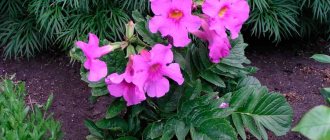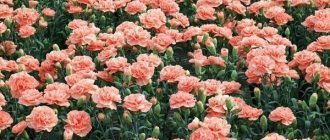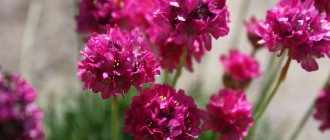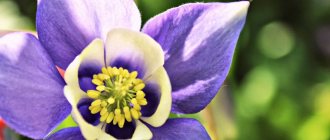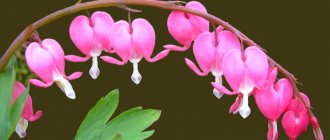Purple with white edging, white with blue dots, blue with a white center - nature has endowed such an unusual color with nemophiles, cute and sensual flowers. In our latitudes, it is quite rare. Although this unpopularity is not at all deserved. The flower is unpretentious in cultivation and care, and its carved leaves and bright flowers will adorn flower beds, flower beds and borders.
Description of nemophila
Nemophila is a climbing plant; when grown, it spreads over the surface of the soil. Stems grow in different directions, rising by 10 cm in plantings, in hanging pots they fall freely. Elongated leaves of a pinnately dissected form grow on the stems. They are painted bright green, densely covered with pubescence. Peduncles are raised 30 cm from the plant. The calyx is up to 4 cm in diameter, of various colors, usually two-colored. Its shape is similar to a buttercup flower. Each bud contains 5 petals. After flowering nemophila forms seeds. They are ovoid and have a smooth or wrinkled surface.
Description of the plant
The genus Nemofila belongs to the Borachnikov family. There are only about 11 species in it, and today about 100 varieties of this cute flower are known.
- Nemophila is an annual herb in height reaching no more than 25-30 cm.
- Fleshy brittle stems branch well, often spread along the ground, forming loose carpets, and in places are raised.
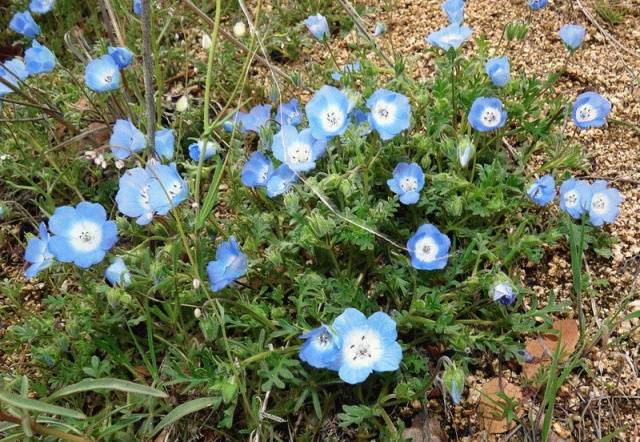
- The leaves are pubescent, pinnately-lobed, and look decorative by themselves.
- The flowers of the nemophila are quite large for such a low-growing plant, in diameter they can reach from 3 to 5 cm.
- The shape of the flowers is in the form of a wide open bell, they do not grow in inflorescences, but one by one, on rather long peduncles from the axils of the leaves.
- No pronounced aroma is observed in nemophila flowers.
- The corolla can be white, blue, blue or purple, often with specks.
- The fruits are hairy capsules of ovoid-spherical shape, 3-6 mm in size.
- Nemophila seeds are medium-small in size, there are about 400 pieces in one gram. They are ovoid, slightly wrinkled, with a small appendage at the end.
Important! Seeds retain good germination for a short time, about two years.
3. Varieties:
3.1 Nemophila Menzies - Nemophila menziesii
Bright, blue nemophila, which is a herbaceous plant with a height of 15 to 30 cm. Nemophila has thin, offensively branched stems at the base, on which palmate - dissected, green leaves, covered with slight pubescence, are located. The leaves reach 5 cm in length. The flowers are bright, blue, with five rounded petals, often have a white tint in the center. The flowering period begins in May - June, the flowers cover the plant very offensively, often hiding the leaves under them.
↑ Up,


Popular varieties
America is considered the birthplace of culture. It is known as the American forget-me-not. Many varieties of nemophila are widespread. The most popular for cultivation are:
- Spotted nemophila;
- Menzis;
- Atomaria;
- Coelestis;
- Penny Black.
Nemophila Spotted
This variety differs from others in the shape of a flower cup. It resembles a bell, only white in color. In the middle, there is a dark spot on each petal.After the flowering period, the plant forms a seed box. It gives the nemophile a decorative look. When growing, the height of a flower crop in planting is about 20 cm. Shoots spread, branch. Cirro-lobed leaves and shoots are slightly pubescent.
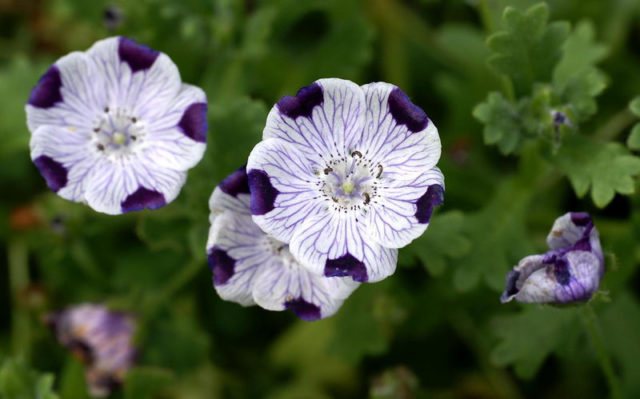

Nemophila Menzisa
The calyx of the flower takes the form of a wide bell of a light blue or dark purple color. A thin white stripe runs along the edge. There are flowers with a white, cornflower-blue or lilac color with a brown spot. The buds are located in the leaf axils. The flower is up to 3 cm in diameter. Nemophila, when grown, forms plantings up to 15 cm high. Long leaves are strongly pinnately dissected, spotted.
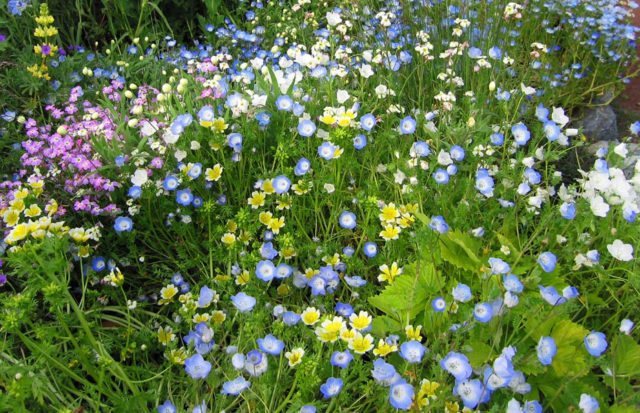

Atomaria
Has white petals. There are dark dots in their center.


Coelestis
It has flowers, the middle part of which is whitish. And the border of the flower is blue.
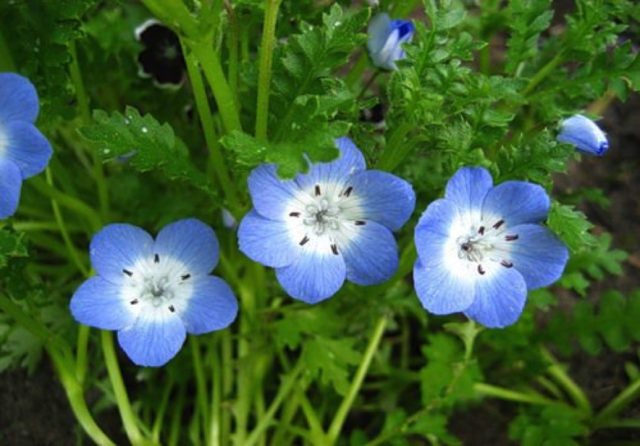

Penny Black
This nemophila is almost black or dark purple in color. It has a white edging along the edge of the petals.
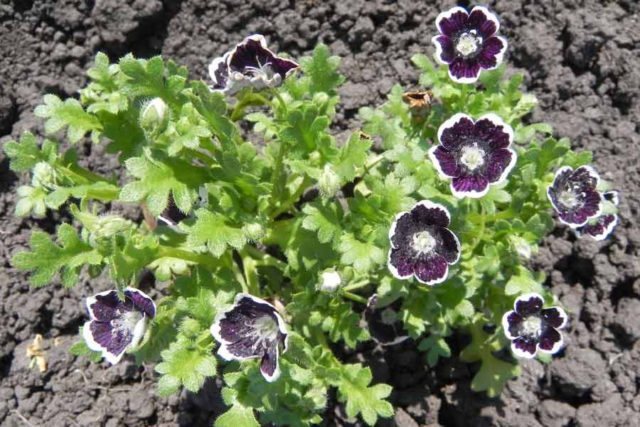

Types and varieties
Of the 11 species of this plant, two are the most decorative - Nemophila Mencis and Nemophila Spotted. They are used in landscape design, decorate hanging baskets and flowerpots.
Nemophila Spotted
In America, this species is known as the "five specks". Its distinctive feature is a dazzling white base color and dark, rounded spots on the outer edge of each flower petal.
This is a ground cover plant with a height of no more than 20-25 cm, the openwork leaves of which create a lush carpet. Lying branching shoots of spotted nemophila are rather tough, not flexible.
Popular varieties:
- Barbara - with purple spots on the petals. The height of the bushes is up to 20 cm.


Nemophila Barbara
- ladybug - there are blue or purple spots at the end of the petals. The flowers are quite large, some can reach 4.5 cm in diameter.
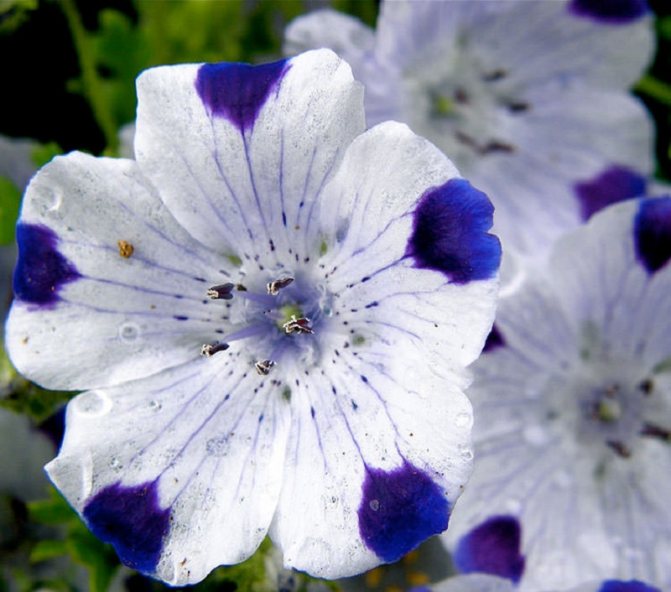

Nemophila ladybug
Nemophila Menzisa
It is a more common and varied species with many varieties. The classic nemophila Menzisa has sky-blue flowers, monochromatic or with a white core, small in size. But many breeding varieties of different colors and with larger flowers have been bred.
Most Popular:


Baby Blue Eyes
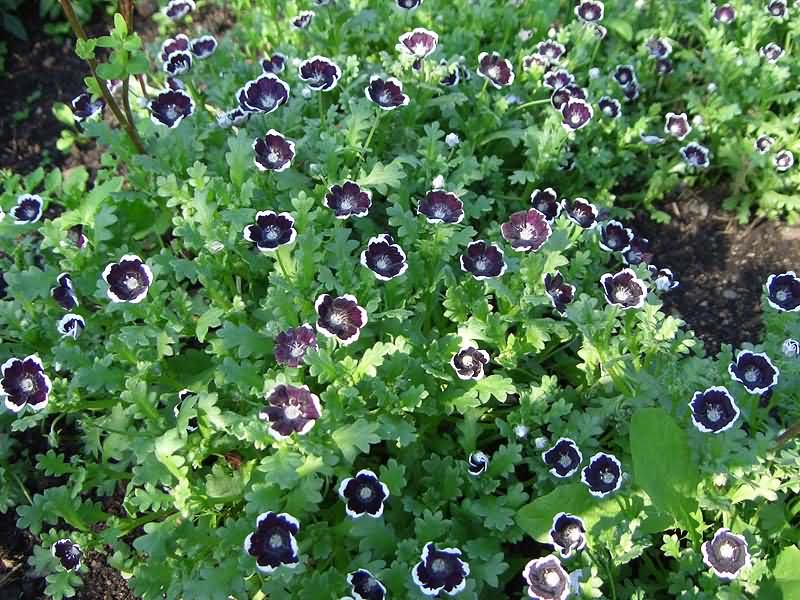

Penny Black
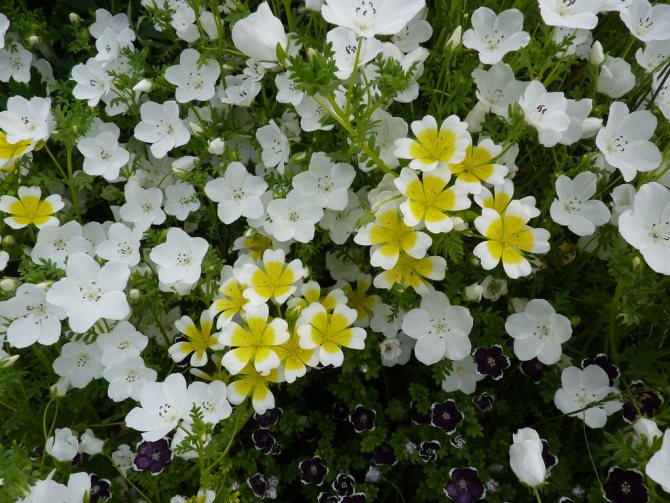

Coelestis
Seedling growing method
Nemophila can be grown from seeds at home like any annual. She does not tolerate transplanting due to the sensitivity of the root system. But since in the temperate climate of Russia the snow cover melts rather late, and it is desirable to have flowering plants in the garden earlier, they practice growing seedlings. If you handle it with extreme care, it will germinate successfully.
When to plant
Nemophila for seedlings from seeds is grown in terms that depend on the climatic characteristics of the region. If the planting is calculated for the second half of May, then the sowing of seeds should be carried out in early April. By this time, the seedlings will get stronger.
Soil and capacity
For sowing, they take soil from sand and peat. To grow nemophila from seeds, different containers are used:
- containers;
- small pots;
- pallets.
Advice! Experienced growers recommend using peat pots for cultivation. So, transplanting into open ground will be convenient and simple, the root system remains unharmed.
Sowing seeds for seedlings
Growing from seeds of nemophila differs little from other ornamental crops. Still, there are some features:
- the seedling container is filled with soil, moistened;
- the seeds are buried 1 cm, placing them at a distance of 5-8 cm;
- the soil is moistened with a sprayer, covered with polyethylene;
- leave for germination in a bright place;
- as soon as the seeds sprout, they immediately remove the shelter.
Seeds germinate within 2 weeks. With sufficient lighting and a temperature of +14 degrees, shoots will appear in 10 days.At higher temperatures, later.
Seedling care
When growing seedlings, nemophila do not dive, so as not to damage the roots. Therefore, when landing, they immediately maintain the required distance. It is necessary to regularly monitor its growth. If the seedlings stretch, then additional lighting is needed.
The grown seedlings are tempered in the air before planting, on cool days - 1-2 hours, on warm days - 7-8 hours.
Planting seedlings on the site
By the time of transplantation in a flower garden or on a flower bed, the plants should grow up to 8-10 cm.
Planting and leaving
In nature, in hot California, nemophila blooms in spring, because then it is too hot and dry for it. Our climate allows you to plant a plant in almost any area. It is advisable to choose a cool place.
Landing requirements
Nemophiles grow best in sunny or semi-shady places, on a permeable and moist substrate. Regular irrigation will prolong flowering. The plant prefers permeable soils (on waterlogged soils, even drainage will not help when summer is humid). On poorly permeable soils, high humidity causes rapid plant death.
Nemophila needs fertile soil, so before planting, you need to add rotted manure or dig up compost with the ground. The reaction of the soil is better neutral, but the plant will grow and bloom well on slightly acidic and slightly alkaline soils.
Due to the fragility of the shoots, the plants should not be exposed to strong winds, trampling - not suitable for tracing paths.
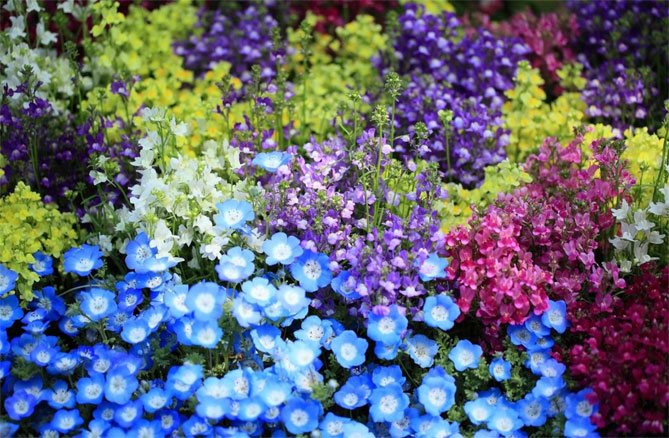

Seed collection
If you need to collect your own seeds, just leave one bush somewhere behind and do not break off its flowers. The harvested and well-dried seeds are stored in sealed containers, retaining the ability to germinate for 3-4 years.
Sowing in open ground
When growing nemophila from seeds, it is important to know when to plant a plant. Sowing is carried out in open ground in the fall or in March-April.
When sowing, it is worth adding organic material with a loose structure to the seeds, which, when mixed with the seeds, allows you not to thicken the crops. It will decompose quickly in the soil, adding nutrients. Nemophila seeds are small, it is easy to sow a lot of them in one place. It used to be recommended to mix seeds with sand.
Seedlings require protection from possible frost. Sowing seeds with an interval of 2 weeks allows you to get plants that come into full bloom at different times and thereby prolong the flowering of the site.
A little advice for novice gardeners: it is better to prepare the bed in the traditional way - to level the ground, make shallow grooves and sow the plants in rows. The grooves are easy to make with the rake handle. You can pull on the string and follow it to make the rows straight. This sowing method will make it possible to distinguish, after germination, where the flowers grow, where the weeds are.
Weeds are easily weeded from row spacings by removing them with a hoe on a dry day. It is important to maintain a distance of 30-40 cm between the rows of plants, otherwise the flowers will be overly compacted, they will begin to stretch towards the sun, instead of growing rapidly, decorating the garden with inflorescences.
Important! Do not plant nemophila too densely, the plant grows vigorously, and rainfall and lack of air flow near the ground will cause the lower shoots to curl. Leave 15 cm space in pots or boxes.
Growing seedlings
Nemophila does not like root damage. Therefore, it is recommended to sow it directly into the ground. However, this does not mean that there is no possibility of earlier sowing. Just sow a few seeds in small pots or trays and then remove the weaker seedlings. After frost, seedlings are planted with a clod of earth.
The seeds are sown in containers with sand and peat.When sowing early seedlings, the optimum temperature for germination is 12-14 ° C, so this is not an easy task at home. Seedlings may not appear quickly on the surface. Do not despair - the seeds usually germinate for 2 weeks. At a temperature of about 14 ° C in a bright room, they will germinate in 10 days (later in the heat).
Photo 1. Seedlings of nemophila, sown in mid-April
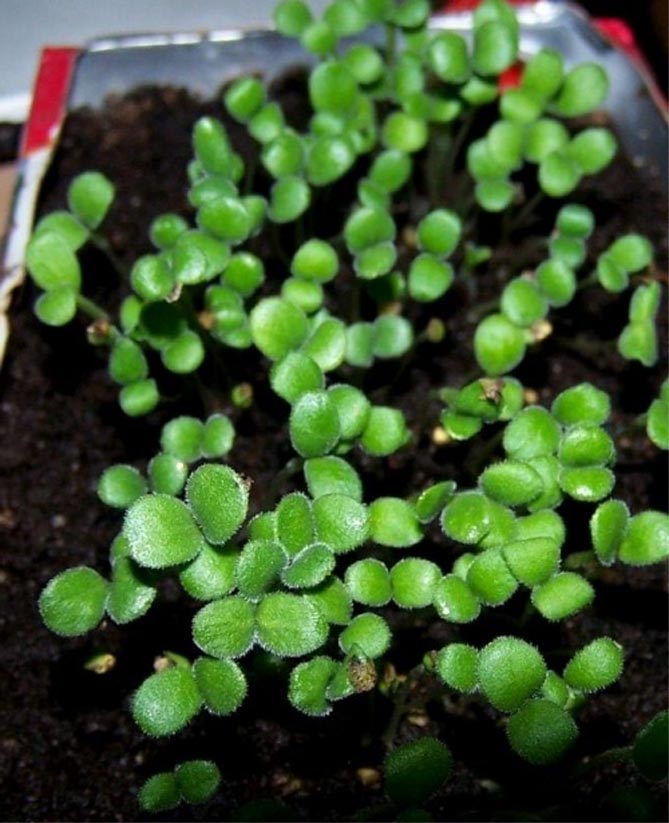

Photo 2. Grown seedlings after 3 weeks
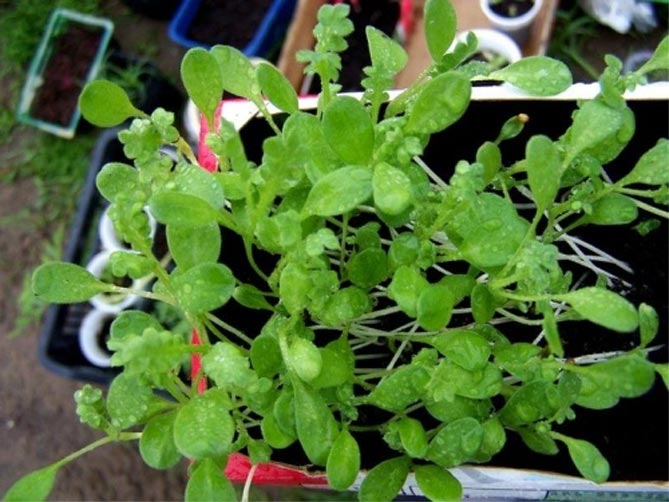

Photo 3. Seedlings planted in open ground in June


Photo 4. Nemophila blossomed in July
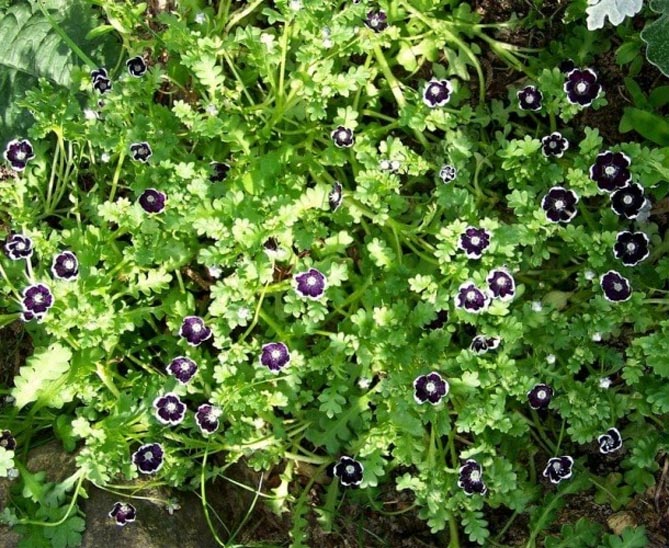

Saplings need a lot of light!
After 2-3 weeks, nemophila seedlings dive into peat pots. After mid-May, seedlings are planted in a permanent place in open ground.
Young self-seeding can be transplanted together with a large clod of earth. Old bushes are much more difficult to accept in a new place.
Plant characteristic
Nemophila is native to the North American continent. Most often found in the wild in Canada, Mexico and the southeastern United States. The British call her blue-eyed, and the Russians call her American forget-me-not. This is a beautiful plant with a surprisingly delicate bud, but it blooms for only 1 year. Therefore, it needs annual sowing. Its stem grows up to 25 cm, and wriggles along the ground. Buds with symmetrical cup-shaped petals grow from the axils of the leaves.
The flowers are small - only 3 cm in diameter, you can find a variety of colors of petals from sky blue to ultramarine blue with white and beige blotches. In the wild, there are white and pale yellow species.
Description
Nemophila is an annual ground cover plant. The stems of the plant are curly and reach the ground. The foliage of the nemophila is bright green in color and elongated. Peduncles can grow up to 25 cm above ground level.
The opened buds are about 3 cm in diameter. Nemophila blooms with flowers in shades of blue, light blue, white with specks.
Nemophiles are grown from seeds and take root well and delight with their simple beauty for a whole season.
Varieties and varieties with photos
North America is considered the birthplace of the plant. It is because of its origin and external similarity to forget-me-not that nemophila is called "American forget-me-not." Among florists familiar with this beautiful flower, the following varieties are popular:
Nemophila spotted - an annual with a peculiar color. On white petals, purple or dark blue spots with veins of the same color. The Americans nicknamed this variety "five specks". They are located not chaotically, but symmetrically. The plant does not grow above 20-25 cm.
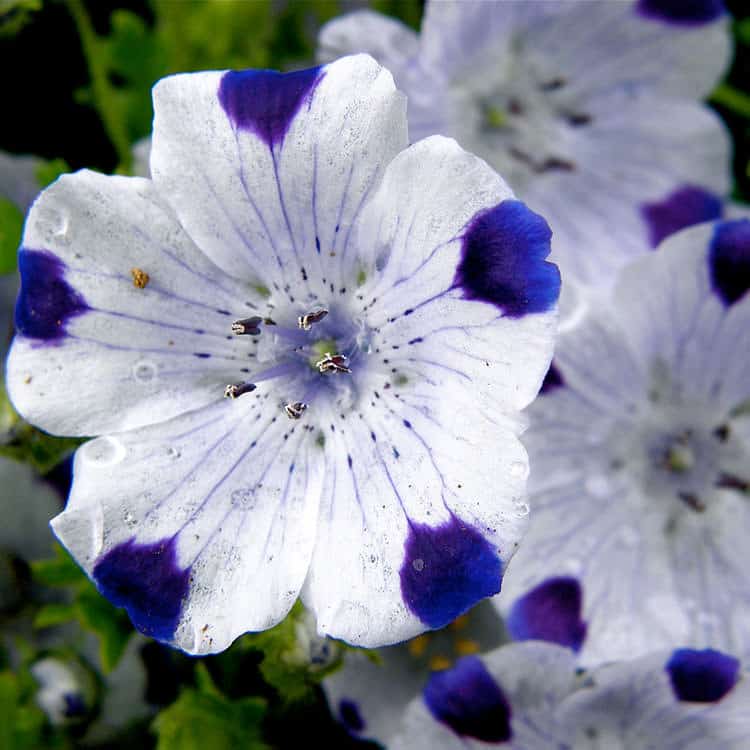

Nemophila Menzisa - also known as baby blue eyes. The petals of the plant are pale blue in color. They can be completely blue or with a white center. The plant reaches a maximum height of 15 cm. Menzisa blooms in small flowers. They are no more than 1.5 cm in diameter.


The varieties also stand out
Nemophila "Discodalis" - the flowers have a beautiful lilac shade, which, due to the contrast with the white border, looks almost black.


Nemophila "Koelestis" - is characterized by its blue-white color. The upper part of the petal is blue, the lower part is white.
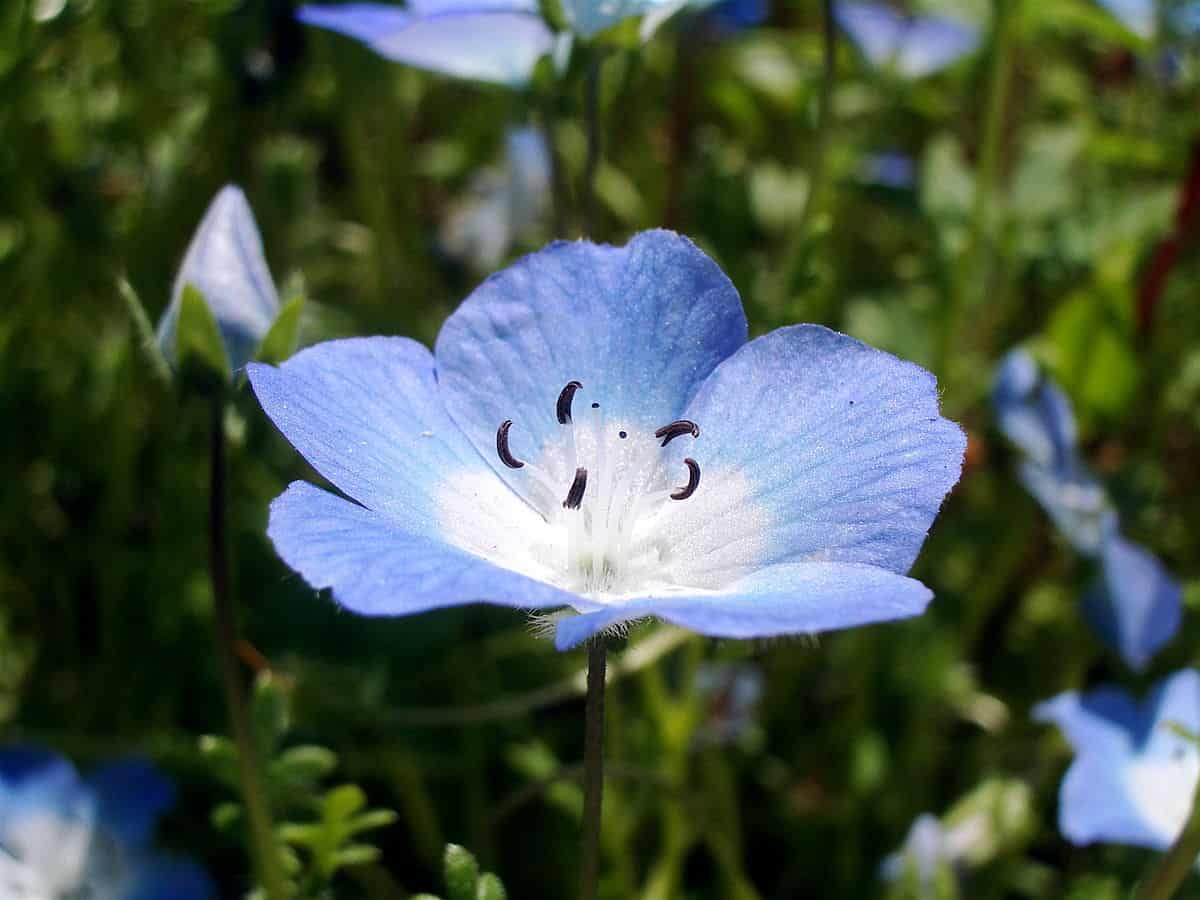

Nemophila "Atomaria" ("Snustorm") - white petals are decorated with small black dots.
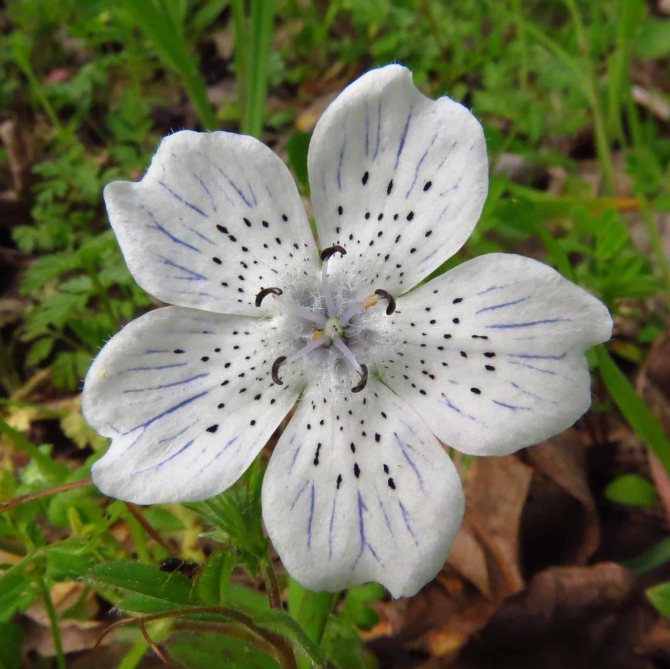

Among all the variety of species and varieties, perennials have not been bred.
Planting seeds directly into the ground
Nemophila can be sown with seeds directly into the soil. Experienced gardeners grow this way, because the culture is difficult to tolerate a transplant. She has a very sensitive root system.
Landing dates
Nemophila survives frosts well, so seeds are sown early. Work with this plant can be carried out from the end of March to June. It all depends on the climatic conditions, the time of the snow cover in the region. If planting is carried out in April, nemophila will bloom in summer.If you want the plant to bloom in the fall, sowing is carried out in July. The plant blooms after 7 weeks from the time of sowing seeds. The first shoots germinate within 2 weeks. At this time, it is necessary to maintain optimal soil moisture.
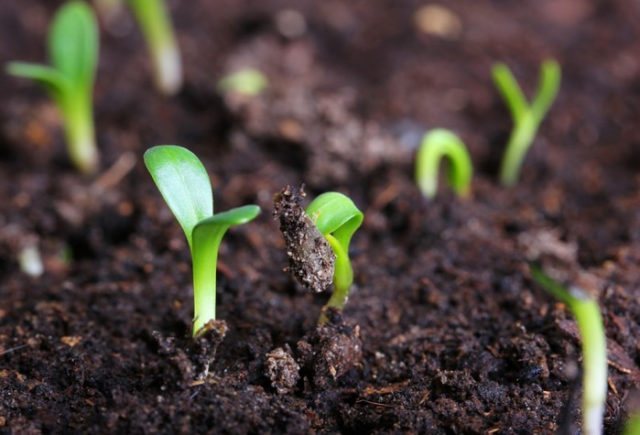

In order to create the effect of constant flowering during cultivation, gardeners plant nemophila seeds gradually, with an interval of 2 weeks - from April to July.
Site selection
Nemophila can be grown in any area: sunny, in the shade and partial shade. Of course, in an area that is well lit, it will grow faster and bloom more abundantly.
It is important to prepare a breathable soil, to make a drainage layer. To prepare the nutritional composition, take in the same proportions:
- humus;
- sod soil;
- sand.
Advice! For one bucket of the prepared mixture, it is recommended to add 1 tbsp. l. chalk. It neutralizes acidic soil.
Landing rules
When growing nemophila from seeds immediately in the ground, gardeners recommend preparing seeds in spring:
- Take a container with holes, fill it with prepared potting mix.
- For prevention, the soil is poured with boiling water.
- Seeds are laid out on the surface of the soil, sprinkled with soil a little.
- Leave container cool, but with sufficient light.
- The soil is moistened by spraying on a regular basis.
- Do not close the top of the container.
The seeds will be ready for open field planting in 10-14 days. In summer, you do not need to specially prepare seed for sowing.
When grown outdoors, the same rules are followed as when growing seedlings:
- Prepare a site for planting, moisten.
- The seeds are buried no more than 5 cm.
- 15-20 cm is left between neighboring plants.
- Breathable, lightweight soil is poured on top.
- They monitor germination, remove weeds.
- As soon as shoots appear, the soil surface is mulched.
- Provide moisture to the area.
Landing rules
Nemophila propagates by seeds. The main thing is to know exactly how to do it. When buying seeds, you should carefully study the packaging and see the variety and color. The seed stock must be prepared by early spring.
Seed preparation
Direct planting of seeds should be carried out depending on the desired flowering date. For long-lasting flowering during the summer, seeds can be planted as early as April. But first, you need to germinate them first. For this you need:
- Mix humus, sand and turf in equal amounts. Add a tablespoon of chalk to neutralize the soil.
- Pour potting soil into a container with drainage holes and pour boiling water over it for disinfection.
- Plant the seeds in the prepared mixture to a depth of no more than 0.5 cm and sprinkle with earth on top. This is done 2 weeks before disembarking at a permanent place.
- Place the container in a cool place with little light. Spray periodically with warm water.
If the seeds are planted in the summer, then this procedure is not necessary.
Landing in open ground
On the garden bed, plants must be placed at a distance of no more than 20 cm from each other. In this case, the earth will be covered with a thick flowering carpet. Planting depth - 0.5 cm.
You need to plant seeds in moist soil, so it is pre-watered. Spread the seeds evenly over the bed and sprinkle with soil.
The sprouts will sprout in 15-20 days. They will need to be thinned out. Watering should be constant. For less moisture evaporation, the soil should be mulched with old peat or rotted compost.
Conditions for American forget-me-not
Growing nemophila is not a laborious process. The flower does not require special conditions for growth. Plants feel good in the shade, but some gardeners notice that in bright sunlight, the shade of the buds is richer, deeper.
The condition and acidity of the soil for flowers also does not play an important role.The only thing that needs to be observed is a constant moisture level. Throughout the life of a plant, the roots must have access to water. Even short dry periods negatively affect its appearance. If the air temperature is too high, the soil overheats and dries out, then the nemophila stops blooming altogether and discards its buds.
The soil on the site should contain nutrients, but this is not the most important factor. The main thing is to keep the soil loose so that moisture penetrates to the roots. Under natural conditions, nemophila grows near rivers or lakes. There is a sufficient level of moisture for them. Therefore, for lush flowering in a flower bed, conditions should be created as close as possible to the usual habitat conditions.
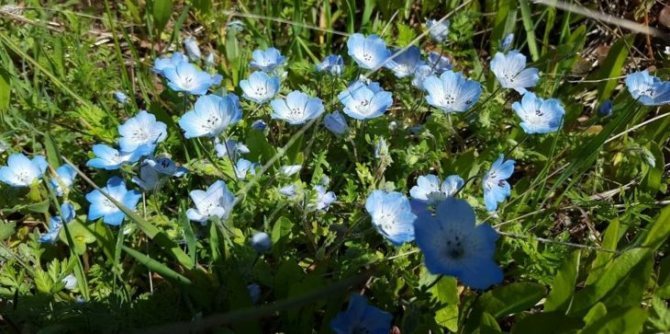

Growing
Nemophiles are very easy to grow - mainly because they grow well and bloom profusely both in full sun and in partially shaded areas. There are only some requirements for soil and watering.
Fertilizer
If manure or compost is applied, fertilization is not necessary. But if a complex fertilizer remains in the watering can, after watering other flowers or tomatoes, you can apply it under the nemophila. This way you can extend the period of mass flowering.
Pruning
Flowering can be repeated by cutting the plants in half at the end of flowering. Removing faded flowers greatly speeds up the creation of new ones.
Watering
This plant loves cool and moist soil, so in hot summer, so that flowering does not stop (and this will happen if the temperature rises, especially at the roots), the soil should remain slightly moist. Water not only satisfies the needs of the plant, but also cools the substrate.
The plant can be attacked by aphids, spider mites, whitefly butterfly. Proper care will help to avoid physiological diseases. If plant rot occurs, it is worth treating with a fungicide, for example Topaz.
Care
Cultivating a crop is pretty straightforward. Most of all, you need to pay attention to watering, feeding, weeding. Weed removal must be carried out during the initial growing period. This should be done regularly, until the weeds have matured, and carefully so as not to damage the roots of the nemophila. As the crop grows, it will occupy the entire surface of the soil, the weeds will have nowhere to grow.
Nemophila does not tolerate even mild cold weather, immediately dies. It's easier to clean everything up in the spring after the snow melts. If the appearance of the flower garden is spoiled by dead plants, they are uprooted.
Fertilizer
Nemophila feels great on fertile soils. If it is grown on nutrient-rich soil, no additional feeding is needed. On poor soils, fertilizers are applied 2 times during the warm season. The first time - during the formation of buds, the second - during the period of mass flowering.
For plants that are grown in containers and pots, the amount of dressing is increased. Since space is limited, nutrients are scarce. Ideally, you need to feed weekly throughout the growing season.
Gardeners use complex fertilizers for flowering crops.
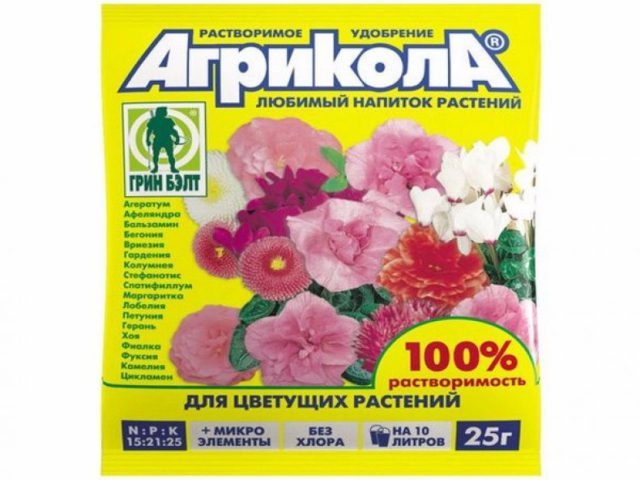

Pruning
Regular pruning is unnecessary. The buds that fade fall off the stem on their own. Gardeners only carry out formative pruning. This is done so that the site looks neat. After pruning, nemophila gives new branches, grows more strongly and blooms profusely.
Watering
When growing nemophila, it must be remembered that it is very demanding on moisture. Water it regularly with warm soft water. Ideally, the temperature of the liquid should not be very different from the air temperature.
Gardeners loosen the soil before watering so that water flows faster to the root system. The soil surface should be slightly damp at all times. In the absence of sufficient moisture, the buds will quickly fade.
Care features
For the full development of nemophile, not only proper planting is necessary, but also good care.
Watering and feeding
The most important rule when caring for a nemophila is frequent watering. The soil should always be moist. Especially this should be monitored in dry weather and watered 2 times a day. Watering with warm water. Best of all, the water should be the same temperature as the air.
Several times during the season, it is recommended to use complex fertilizers as top dressing. This procedure can be carried out first before bud formation, and then during active flowering.
Soil care
For the nemophila, the processes of loosening and weeding are also important. Loosening to allow water to penetrate the soil better. Weeding will remove weeds, which not only spoil the aesthetics of the outside, but also take away nutrients and moisture from the flowers.
Diseases and pests
Since nemophila has not yet sufficiently settled in our area, harmful insects are not afraid of it, which means that the plant should not be treated with insecticides. The only pest that can interfere with the plant is a slug. They appear due to high soil moisture. However, they can only harm young shoots. To combat them, you can use wood ash.
Nemophila is also quite resistant to diseases. Only dry soil can harm her. Do not forget to water it constantly and loosen the soil.
Diseases and pests
| Spider mite Ways to fight:
|
| Slugs Ways to fight:
|
| Gray rot Ways to fight:
|
Nemofila: the best varieties
There are many species of this plant, there are about 100 of them. Outwardly, nemophila is very similar to a simple and familiar forget-me-not or pansies. Reproduction of this plant occurs in the same way as with forget-me-nots. Proceeding from this, flower growers often call this flower the American forget-me-not. But they have differences, the main difference is the color of the petals.
Fresh articles about garden and vegetable garden
Bunch of black tomatoes
Preparing tomato seeds for sowing seedlings
Tomatoes: planting seedlings according to the lunar calendar
So, nemophila "Ladybug", despite the fact that the color of this plant is not quite similar to this insect, but very similar to its shell: the same specks of various sizes, they are mostly purple or blue. The petals of this variety are completely white, wide, collected in a bell with a diameter of five centimeters. Leaves with 5-7 toothed lobes, the upper ones are sessile, spoon-shaped. Blooms from June to September. Afraid of drought, so in hot weather in the evening it is necessary to add. Reacts well to feeding, organic fertilizers are applied before planting.
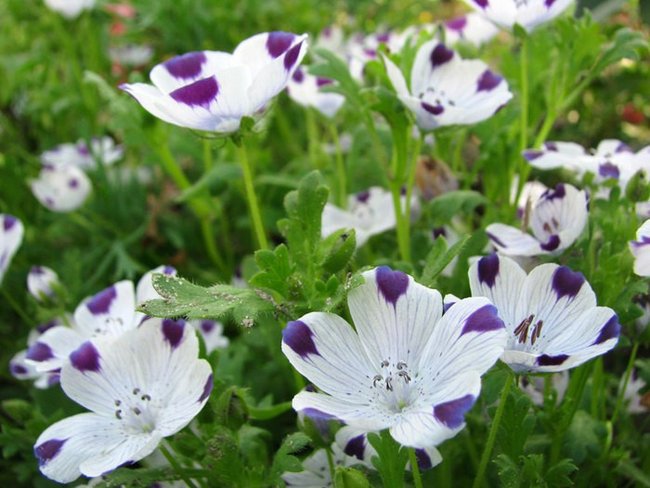

This variety of nemophila is most often found in our gardens, along with the nemophila Menzisa, which has blue petals with a pale, almost white, edge. The diameter of this plant is slightly smaller - it does not exceed 3 centimeters. But they look very advantageous - purple, almost black inflorescences with a white edging. Large tracts of this plant can simulate water, because the stems of the plant creep along the ground, raising above them myriads of single cupped five-membered flowers. The bright green leaves create a luscious backdrop for the flowers. Blooms from June to autumn.


And the most spectacular, undoubtedly, is Nemophila "Black Shepherdess", whose petals are painted in deep black color, which, in combination with their non-glossy surface covered with short hairs, gives the flowers a velvety look. And the white edging along the edge looks like a satin ribbon.
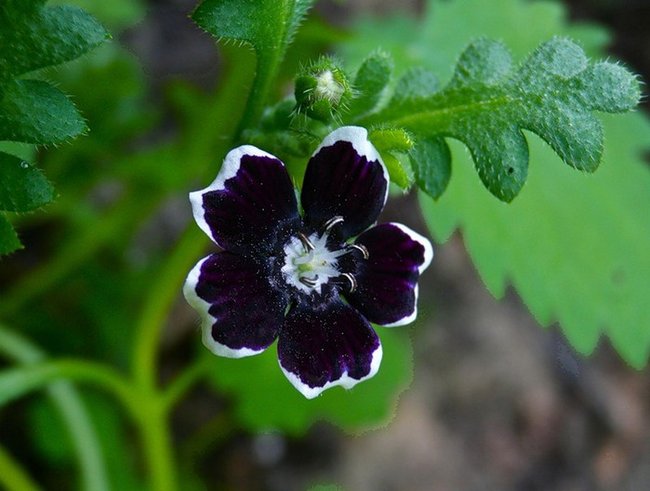

The variety of nemophila species does not include any perennial cultivar; this is the main disadvantage in choosing it as an ornamental plant on lawns.
The use of nemophila in landscape design
Nemophila is grown as a container culture, in independent plantings and in compositions with other plants.
An annual looks good as a groundcover in a garden between trees and shrubs.
Use it to design a low curb. Grown to fill the space between ornamental bulbous or corms in flower beds.
Well suited for decorating the banks of ponds and streams.
Advice! Nemophila is recommended to grow in the foreground, since it is not tall. For tub plants, it is used as an undergrowth.
The culture perfectly complements any ornamental plants: clematis, roses, other large-flowered crops.
A good combination is obtained by growing a crop next to bells, chamomiles, phloxes and other plants that bloom in the summer-autumn period.
Nemophila is grown for edging flower beds, garden paths, lawns.
Care during and after flowering
Mandatory activities:
- frequent watering;
- fertilizing with mineral fertilizers with a mandatory increase in the proportion of phosphorus and potassium to support the buds;
- spraying if it is hot. The procedure is carried out only in the evening or in the morning;
- if nemophila grows in a small area, then it is useful to loosen the soil;
- mulching to preserve moisture in the soil is carried out until the plants are very elongated, and the branching stems do not interfere with the florist's passage for agrotechnical measures.
Home-made mayonnaise "Taste of childhood". Cooking recipe with photo
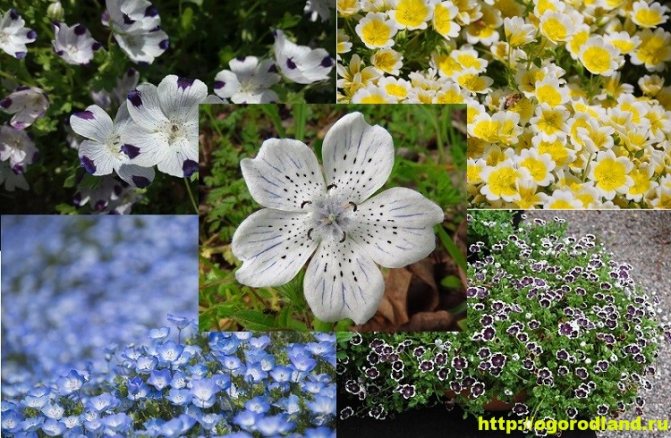

Nemophila is a flower bed decoration. Growing and varieties of nemophila Not all flower growers know such a beauty as nemophila. Nemophila bushes spread along the ground and are covered with small, delicate flowers.
Nemophila Is a low-growing herbaceous annual plant. Its height can be up to a quarter of a meter (25-30 cm). A nemophila flower with a diameter of 3 cm looks like a buttercup, and its petals have a complex feathery configuration.
The duration of flowering starts from the first days of summer and ends at the end of October (depending on the region). The flowers are white in color with drooping purple spots.
Nemophila requires timely watering, does not tolerate drought. On hot days, watering should be carried out in the evening.
When planting, it is advisable to add organic fertilizers to the soil. Nemophila loves land containing a large amount of humus, grows well in sunny and semi-shaded areas. Propagated exclusively by flowering seeds.
Popular varieties of Nemophila
The plant is bred in North America, it is also called "American forget-me-not" in our area. All over the world, there are more than a hundred species of this flower.
The most popular and popular among flower lovers are the following varieties: Menzis, Atomaria, Nemophila spotted, Peni Black and Coelestis.
- Flower "Menzisa" is similar in shape to a bell, it is white or sky-colored, has spotted heads and leaves.
- In the bloom of Atomaria, small black dots are visible, and the whole flower is colored white.
- The variety "Nemofila spotted" differs from other species in the large bell-shaped flower of a whitish-purple color. Plant height reaches 20 centimeters.
- The variety of nemophila "Peni Black" has flowers of a very rich purple color, which from afar may appear black.
- As for the Koelestis variety, the flowers of this variety are whitish with an unusual blue edging.
Growing tips and caring for nemophila
The plant is considered disease resistant and can grow in areas with different climates. It will not be difficult to grow it by seed on your own at home.
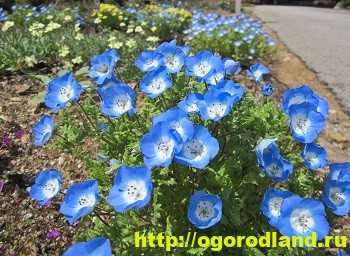

Nemophila Menzisa
Although the flower has established itself as a picky species and can breed in areas with varying amounts of UV exposure, it is best to sow seeds in a sunny location. Since in a sunlit flower bed, ripe buds will be large, and the stems will be strong. The flowering period of nemophila is June-September. Before sowing nemophila seeds, it is necessary to prepare the soil, it is imperative to moisten it and loosen it. Planting flowers begins in the last days of March and may end in the end of spring.
Sown nemophila in early spring will give the first flowering in early summer, and late planting - in early autumn. The first shoots appear after sowing in a few weeks.


Nemophila Atomaria
It is undesirable to cover the seed hole with a large layer of soil. The acceptable value is half a centimeter from the ground. The distance between the unit of the seed should be at least 10 cm, 20 cm is possible. Such gaps will allow you to get a luxurious carpet from nemophila in the future.
You should know! Nemophila is a plant that does not like transplanting. If the seeds were grown indoors, then it is forbidden to plant them on street soil. Otherwise, the plant will disappear.
Despite all the unpretentiousness of this species, it needs constant monitoring and care. After planting seeds in the ground, you need to monitor the moisture content of the hole. Good plant maintenance requires regular watering, especially during dry seasons. If the soil on which the plant is planted is dry, then there is a high probability that it will die. It is recommended to moisten the soil daily with cold water in the first week after planting the seeds.
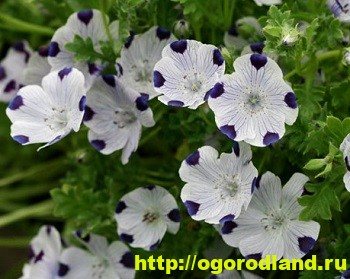

Nemophila spotted
For the normal development of the flower, it is necessary to remove the unwanted alien plants (weeds) that have grown.
Feeding Nemophila is carried out with complex mineral fertilizers after the first buds appear and then several more times during the flowering season. Fertilize the ground for plantings with chalk or humus. The most effectively prepared soil for sowing is an equal ratio of humus, sand and sod substrate and one spoonful of chalk per bucket of the whole mixture. If the seeds are planted densely in a row, then the sprouted stems must be thinned out, leaving a distance of at least 20 cm between the units. Such maintenance measures will promote the good development of a flower with a healthy large bud.


Nemophila Peni Black
The advantage of this plant is that it excludes treatment with various chemical agents against pests. Since the flower is not attacked by various harmful insects, with the exception of slugs, which damage young shoots. Nemophila also has a high level of frost resistance, easily tolerates frost.
Seed collection should be carried out after the bud is fully ripe. Seeds of nemophila are large, therefore, when collecting, it is better to shake them out of the flower into some kind of plastic container or cup. Also, the flower can self-propagate by winding uncollected seeds from the plant boll.
If during flowering there is a decrease in buds on the bush, these are the consequences of a lack of nutrients. In this case, it is advisable to carry out more abundant feeding with various organic fertilizers under the bush and to increase the watering of the planting soil.
The plant can produce several blooms per season. To do this, you need to prune in the middle of summer. The formed bushes will look neat and pruning will contribute to the abundant budding of the nemophila.
Nemophila in landscape design
The flower is a wonderful decoration for any landscape area. It can be planted in a variety of garden bed shapes and arrangements, creating a unique garden design.


Nemophila in landscape design
For example, plant blue flowers in the form of waves or along the edge of a flower bed, the sides of the path in the garden.Modern gardeners often use the plant as a zoning for planting areas. Therefore, this species is popular all over the world.
The nemophila bloom cluster near reservoirs or a pond looks gorgeous. Also, the planting will be appropriate on an alpine slide, as its complementary element. The plant can be grown in drained soil. In this case, it will not allow moisture to stagnate in the soil. Often, nemophiles are grown in hanging and ordinary "pot" products.
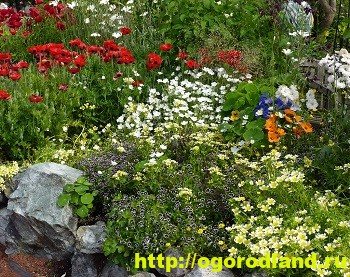

The combination of nemophila with other colors
These flowers get along well with other types of plants. Thus, you can create a gorgeous flower bed with a combination of different varieties and types of annuals.
Nemophila goes well in planting with large white or colored daisies, calendula, bells and phlox.
A convenient plant for growing in multi-storey buildings. You can decorate the balcony with hanging nemophila pots in a uniform style or in combination with other similar plant species.
Today the flower is more popular in Western countries than in Eastern Europe.
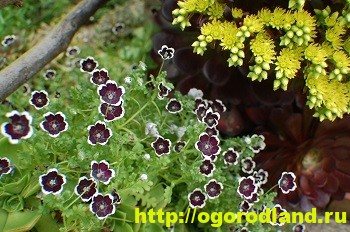

Nemophila on an alpine slide
For example, in the Japanese National Seaside Park Hitachi. There, a nemophilous sky-colored hill is dotted with over 4 million flowers, creating a breathtaking view overlooking the ocean. Thousands of tourists visit the park every year, admiring the heavenly beauty of the plant. Also, most often you can find the most beautiful Nemophila fields in the USA, Canada and Mexico. As a result, we can say that "American forget-me-not" is an excellent option for ornamental plantings in different climates. This is a non-painful flower with good frost resistance. According to experts, this species will be more and more common in Russia every day and will increase the demand among lovers of flower plantings. After all, the flower is distinguished not only by its unpretentiousness in care, but also by its amazing delicate appearance.
Excellent (2) poor (0)
Reproduction
The plant is easily propagated by the seed method. Seeds can be sown both as seedlings and directly into the ground.
The earlier the seeds are sown, the earlier the crop will begin to bloom. You can sow the seeds again - in June, so that namofila pleases with its delicate flowers in the autumn.
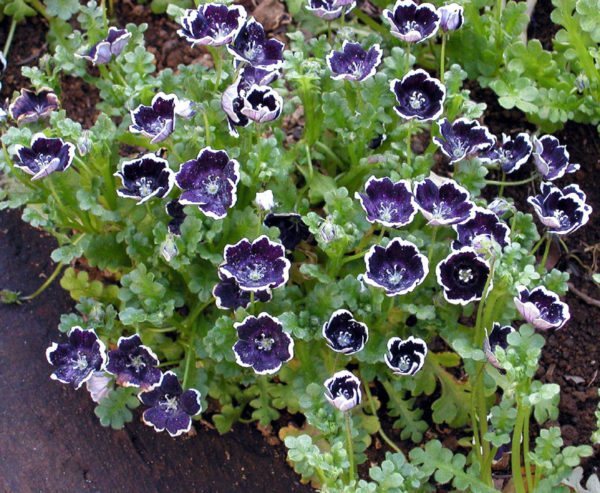

Note: it is not necessary to deepen the seeds much. It is enough just to sprinkle them with a thin layer of earth.
After sowing, the seedlings must be thinned out, leaving a distance of at least 15 cm. Flowering begins two months after sowing the seeds or a little earlier. In addition, reproduction by self-seeding is possible.
Collection and storage of seeds
An uncomplicated procedure is carried out after the end of flowering, when the capsules on thin stems have dried up. Do not wait until the base with the seeds is completely dry: you can "lose" some of the seeds, and self-sowing planting may not be so successful: the plant is not resistant.
After collecting, the boxes are carefully opened, the seeds are poured onto clean paper, the planting material is dried for several days in a warm, but not hot room. Prepared seeds are poured into paper bags or linen bags. The planting material is stored in a damp room at a moderate temperature: + 16 ... + 18 ° С.
Growing from seeds
If you want to grow Nemophila seedlings from seeds at home, it is important to know when to sow. You need to build on the timing of planting seedlings in open ground.
When to plant


In central Russia, they are engaged in sowing seeds in early April, then in the second half of May you will have strong healthy plants ready for transplantation into open ground. In more southern regions, seedlings on a flower bed can be planted in April, in which case the seeds should be sown in early March.
Sowing seedlings
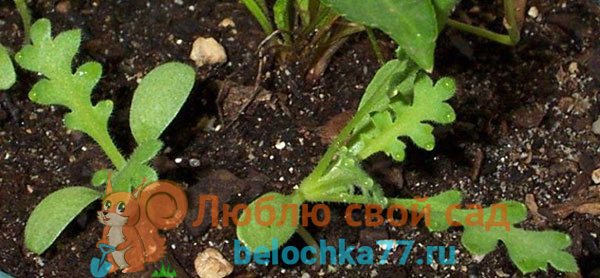

The rules for sowing seeds of nemophila practically do not differ from growing seedlings of other flower crops:
- The landing box is filled with soil in advance, which is slightly moistened.
- Seeds are sown to a depth of 1 cm, observing an interval of 5-8 cm between future plants.
- The ground is slightly moistened with a spray bottle and covered with plastic wrap.
- The container with landings is placed in a warm and bright place.
- After the emergence of shoots, the shelter is immediately removed.
- A pick for nemophila is undesirable, since it has a sensitive root system. It is best to initially plant the plants at a sufficient distance from each other.
- With the arrival of heat, the seedlings must be hardened in the open air. In cool weather, the container with seedlings is kept outside for 1-2 hours daily. On warm days, this time is increased to 7-8 hours.
On a note! Monitor the condition of the seedlings. If it begins to stretch, it is necessary to organize the backlight.
Planting nemophila seeds: video
Choosing a landing site
You can plant nemophila in open ground, and in a pot or flower bed. The main requirement of a plant is to comply with its basic needs.
Lighting
This plant cannot be called picky, demanding or capricious. It feels great both in partial shade and on the sunny side. It loves diffused light, but it will easily get used to the bright sun. Some growers have come to the conclusion that nemophila will bloom longer and brighter in intense sunlight.
The soil
Especially for nemophila, the level of soil moisture is important. When the earth dries up, the plant will simply stop blooming and begin to die. Because of their love for moisture, they often grow on the banks of water bodies. In this regard, it is worth paying attention to the permeability of the soil. The looseness and moisture of the earth is in the first place for nemophila. In addition to regular watering and loosening the soil, it is worth organizing mulching. The mulch will retain moisture in the ground longer, which will reduce the risk of drying out.
A good soil composition would be:
All these components should be in approximately equal proportions.
The acidity level should be at a neutral level. To normalize this indicator, add 1 tablespoon of crushed chalk to a bucket of soil mixture.
Nemophila care
Nemophila belongs to the category of plants that grow well with minimal attention from the grower. However, some care measures are necessary.
Lighting and plant nutrition
American forget-me-not will grow both in a shady place and in a sunny area. Experienced florists prefer the second option. Flowers planted in partial shade near trees and tall shrubs do not bloom so luxuriantly compared to a flowerbed in an open area.
It is recommended to feed the plantings with a complex mineral fertilizer during the budding period. If the site was well fertilized before planting, no more fertilizing is required for the flowers. On poor soils, the flower bed is fertilized twice - when the buds form and at the height of the flowering period.
Watering
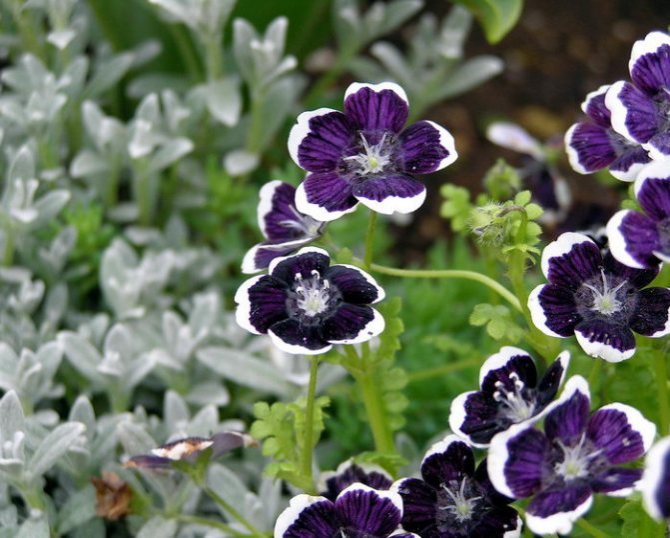

Nemophila flower photo
The flowering time is a period of particular sensitivity to lack of moisture. Therefore, excessive dryness of the soil forces the plant to take protective measures: the leaves begin to sink to the ground, the flower buds stop growing, and may wither. If the weather is dry, it is necessary to irrigate two or three times a week, you can mulch the soil by scattering fine humus or peat to reduce the evaporation of moisture from the ground. It is important to loosen the soil between the bushes.
Combination with other colors and use in the garden
Nemophila will be great to combine in the garden with many perennial or annual low-growing plants.
Note that Nemophila is often confused with another adorable short herbaceous annual from North America - Limnantes. This flower, like nemophila, has not yet received widespread distribution in Russia, and even belongs to a completely different family.Nevertheless, their common origin and similar growing conditions were somewhat akin to them. In addition, the shape of their flowers is also similar. But the coloring of Limnantes is completely different - it is lemon-white.


Attention! Among nemophiles, flowers with a similar color are not found.
But in the garden, these two plants will go well with each other, creating contrasting compositions in flower beds or on flowering lawns.
Combination with other plants
Nemophila will look good with simple small flowers that are outwardly similar to each other. Against the background of roses, asters or lilies, they will get lost and become invisible. Therefore, in combination with similar plants, the whole composition will turn out to be gentle and pretty. These are plants such as:
- Forget-me-not;
- Bell;
- Iberis;
- Chinese carnation;
- Ursinia;
- Gatsania.
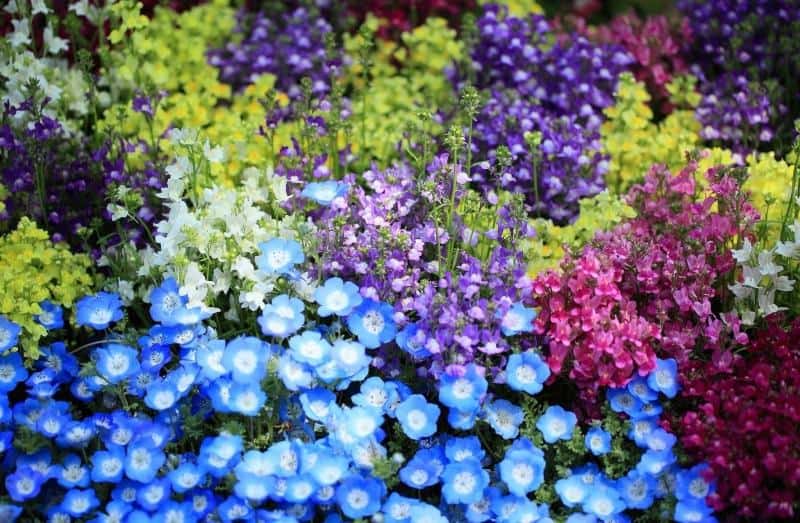

Nemophila will look good in a single planting, creating a carpet of flowers.
Although nemophila is not widespread in our country, this does not mean at all that it is unsuitable and unsuitable for our conditions. It is not popular only due to the ignorance of flower growers. Nemophila not only has unpretentiousness, but also looks beautiful, cute and gentle in a flower garden.
Good day to all readers!
From a distance, nemophila flowers can be mistaken for a bright forget-me-not. However, they call it that - American forget-me-not, because the native land of the plant is the forests of North America. Nemophila prefers to settle on sunny forest edges.
The American forget-me-not belongs to the Vodolistnikov family. The genus includes only 11 species. Let's take a closer look at this flowering plant.


